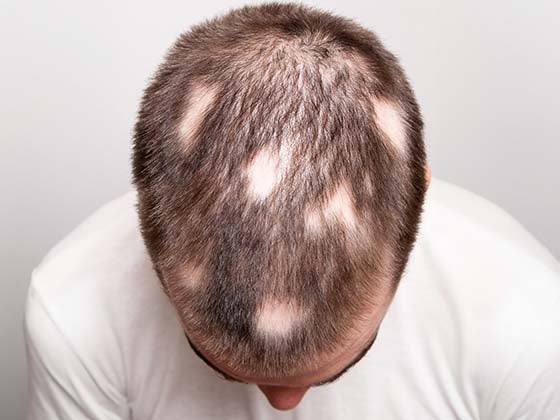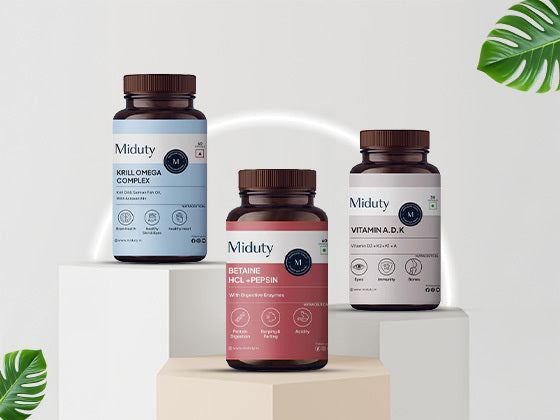Skin slugging has emerged as a highly sought-after skincare trend that promises to deliver hydrated, dewy, and glowing skin. By applying a heavy, occlusive product to the skin and allowing it to work its magic overnight, skin slugging can help to lock in moisture, nourish the skin, and reduce the appearance of fine lines and wrinkles.
In this comprehensive guide, we've covered everything you need to know about slugging skin, from its benefits to the products you can use and how often should you do skin slugging?
We've also addressed some common concerns, such as whether slugging is suitable for all skin types and if there are any potential side effects.
So, if you're ready to say goodbye to dry, dull skin and hello to a brighter, more radiant complexion, skin slugging may just be the solution you've been looking for. Get ready to take your skincare routine to the next level!
What is slugging?

Slugging skin is a simple skincare technique that involves applying a heavy, occlusive product to the skin, typically before bedtime, and leaving it on overnight. The idea behind slugging is to create a barrier on the skin that locks in moisture and helps to hydrate and heal the skin. The term "slugging" comes from the idea that the product applied to the skin resembles a slug's slimy trail.
Typically, slugging skin products used are petroleum jelly-based, such as slugging skin Vaseline or slugging skin Aquaphor, or heavier creams like Nivea Cold Cream or CeraVe Healing Ointment. The thick, emollient texture of these products creates a protective barrier on the skin that seals in hydration, while also delivering key ingredients to the skin. This overnight treatment is said to improve the overall appearance of the skin, leaving it looking brighter, smoother, and more radiant.
Origins of slugging in skincare

The term "slugging" in skincare refers to a popular Korean beauty trend in which a thick layer of petroleum jelly or occlusive moisturiser is applied to the skin as the final step in the skincare routine. This technique is thought to help retain moisture, prevent transepidermal water loss (TEWL), and promote hydration, resulting in softer, smoother skin.
While the concept of slugging has gained popularity in recent years, it dates back to traditional skincare practices and the use of occlusive ingredients to protect and nourish the skin. Petroleum jelly, the most commonly used product in slugging, has been around for more than a century and has long been used as a skin protectant and moisturiser. Its occlusive properties form a barrier on the skin's surface, reducing moisture loss and increasing the skin's natural hydration levels. For decades, Korean skincare culture has emphasised the concept of "moisture sealing" or "moisture barrier" as a critical principle for maintaining healthy, radiant skin. The goal is to form a protective barrier on the skin's surface that traps moisture and protects it from environmental stresses.
Slugging became popular in the West thanks to social media platforms and online skincare communities, where people began sharing their experiences and results from incorporating this technique into their daily routines. Many users reported increased hydration, softer skin, and reduced dryness and irritation. Today, slugging is a well-known skincare trend that people all over the world use to increase hydration and promote healthy skin. While petroleum jelly is the most commonly used product for slugging, other occlusive moisturisers such as plant-based oils, lanolin, and silicone-based creams can produce similar results.
Key ingredients in products for slugging

Slugging products, which involve applying a thick layer of occlusive moisturiser to the skin to lock in moisture, usually include key ingredients that form a barrier to prevent moisture loss and promote hydration. Here are some common key ingredients found in products used for slugging:
-
Petroleum Jelly (Petrolatum): Petroleum jelly is a popular and effective ingredient for slugging. It forms a protective barrier on the skin's surface, preventing moisture from evaporating and aiding in hydration retention. Petroleum jelly is non-comedogenic and suitable for all skin types, but some people may prefer alternatives due to its heavy texture.
-
Mineral Oil: Mineral oil, like petroleum jelly, is an occlusive substance that creates a barrier on the skin to retain moisture. It's lightweight and non-comedogenic, making it ideal for sensitive and acne-prone skin. Mineral oil is commonly found in moisturisers and ointments for slugging.
-
Dimethicone: Dimethicone is a silicone-based component that functions as an occlusive agent in skincare products. It creates a permeable barrier on the skin's surface to prevent moisture loss without blocking pores. Dimethicone is lightweight and appropriate for all skin types, especially sensitive skin.
-
Shea Butter: Shea butter is a natural emollient and moisturiser obtained from the shea tree's nuts. It is high in fatty acids and vitamins, making it extremely moisturising and nourishing to the skin. Shea butter provides a protective layer on the skin's surface, helping to retain moisture and promote suppleness.
-
Beeswax: Beeswax is a natural wax made by honeybees that is commonly utilised in skincare products due to its emollient and occlusive characteristics. It creates a protective barrier on the skin, keeping moisture in and guarding against environmental irritants. Beeswax is safe for all skin types and offers long-lasting moisture.
-
Ceramides: Ceramides are lipid molecules that naturally occur in the skin's barrier. They play an important role in maintaining moisture balance and skin barrier functionality. Ceramide-containing skincare products replace and enhance the skin's natural barrier, minimising moisture loss and increasing hydration.
-
Glycerin: Glycerin is a humectant, meaning it absorbs moisture from the environment into the skin, hydrating and softening the surface. It is frequently used in occlusive moisturisers to boost their moisturising effects and increase skin hydration.
When choosing slugging products, make sure to select formulations that are appropriate for your skin type and preferences. Choose products that are non-comedogenic, fragrance-free, and hypoallergenic, especially if you have sensitive or acne-prone skin. Patch testing new goods can also help to avoid bad reactions and assure skin compatibility.
Comparative analysis: Slugging vs. other hydration methods

Comparing slugging to other hydration methods can help you decide which approach is best for your skin type, concerns, and preferences. Here's a comparison between slugging and other hydration methods:
-
Slugging:
-
Method: Slugging involves applying a thick layer of occlusive moisturizer, typically petroleum jelly or a similar product, to the skin as the last step in your skincare routine.
-
Benefits: Creates a strong barrier on the skin's surface to prevent moisture loss. Locks in hydration and helps maintain optimal moisture levels. Can improve skin texture, softness, and elasticity.
-
Considerations: May feel heavy or greasy, especially for those with oily or acne-prone skin. Some people may experience clogged pores or breakouts if the occlusive moisturizer is too thick or comedogenic. It is not suitable for daytime use or under makeup due to its heavy texture.
-
Hydrating Toners:
-
Method: Hydrating toners are lightweight, water-based liquids applied to the skin after cleansing to replenish moisture and prep the skin for subsequent skincare products.
-
Benefits: Provides instant hydration and refreshes the skin. It helps balance the skin's pH levels and improve the absorption of subsequent skincare products. Lightweight texture suitable for all skin types, including oily and acne-prone skin.
-
Considerations: May not provide long-lasting hydration compared to occlusive moisturizers like slugging. Additional moisturizing steps may be needed for drier skin types. Not as effective at sealing in moisture as occlusive moisturizers.
-
Hydrating Serums:
-
Method: Hydrating serums are lightweight, fast-absorbing formulations containing high concentrations of hydrating ingredients like hyaluronic acid, glycerin, and ceramides.
-
Benefits: Delivers concentrated hydration to the deeper layers of the skin. It helps plump and smooth the skin's surface, reducing the appearance of fine lines and wrinkles. Lightweight texture suitable for layering with other skincare products.
-
Considerations: May not provide sufficient hydration on its own for very dry or dehydrated skin. It requires additional moisturizing steps, such as using a cream or lotion, to seal in moisture. May be more expensive than other hydration methods due to the higher concentration of active ingredients.
-
Sheet Masks:
-
Method: Sheet masks are pre-soaked in serum or essence and applied to the face for a specified period to deliver intense hydration and nourishment.
-
Benefits: Provides an instant boost of hydration and revitalization to the skin. Offers targeted treatment for specific skincare concerns, such as dryness, dullness, or irritation. Relaxing and pampering skincare rituals.
-
Considerations: Results may be temporary, lasting only a few hours or days. Sheet masks can be messy and inconvenient to use, especially for those with active lifestyles. May contain fragrance or other potential irritants that could trigger sensitivity or allergic reactions.
Slugging: Benefits for skin

Slugging skin before and after reveals that it has several potential benefits for the skin, including:
-
Hydration: Slugging helps to hydrate the skin by sealing in moisture, preventing it from evaporating. This can result in a more plump, radiant complexion.
-
Healing: The occlusive nature of the products used for slugging helps to create a protective barrier on the skin that can help to heal dry, damaged, or irritated skin.
-
Improved skin texture: Slugging can help to smooth and improve the overall texture of the skin, leaving it looking brighter and more even.
-
Reduced appearance of fine lines and wrinkles: By keeping the skin hydrated, slugging can help to reduce the appearance of fine lines and wrinkles.
-
Better absorption of skincare products: By creating a skin barrier, slugging can help to improve the absorption of other skincare products, allowing them to penetrate deeper into the skin.
It's important to keep in mind that everyone's skin is different, and the slugging skin benefits may vary from person to person. It's always best to consult with a dermatologist or skincare professional before starting any new skincare routine.
Enhancing the skin's moisture barrier

Improving the skin's moisture barrier is essential for maintaining hydration, preventing moisture loss, and promoting overall skin health. Here are some effective ways to strengthen and protect your skin's moisture barrier:
-
Gentle Cleansing: Use a gentle, non-stripping cleanser to protect the skin's natural oils and pH balance. Avoid harsh cleansers containing sulphates or alcohol, as they can disrupt the moisture barrier and cause dryness and irritation.
-
Hydrating Ingredients: Incorporate hyaluronic acid, glycerin, ceramides, and niacinamide into your skincare regimen. These ingredients attract moisture to the skin, replenish hydration, and strengthen the skin's barrier function.
-
Moisturise regularly: Use a rich, emollient moisturiser twice a day to keep moisture in and nourish the skin. Look for moisturisers containing occlusive ingredients such as petrolatum, shea butter, or squalane to form a protective barrier against water loss.
-
Avoid Over-Exfoliation: Exfoliate infrequently to protect the skin's moisture barrier. Over-exfoliation can deplete the skin's natural oils and disrupt its protective barrier, resulting in dryness, redness, and sensitivity.
-
Protect from Environmental Stressors: Keep the skin safe from harsh environmental factors like high temperatures, wind, pollution, and UV radiation. Use sunscreen every day to protect yourself from UV rays, and in dry climates, consider wearing protective clothing and using a humidifier.
-
Healthy Lifestyle Habits: Eat a well-balanced diet high in antioxidants, vitamins, and essential fatty acids to promote skin health from the inside out. Stay hydrated by drinking plenty of water, get enough sleep, manage your stress, and avoid smoking and binge drinking.
-
Use Barrier Repair Products: Consider using barrier repair products that are specifically designed to strengthen and repair the skin's moisture barrier. These products frequently include a combination of ceramides, fatty acids, cholesterol, and other barrier-supporting ingredients to restore and maintain proper barrier function.
-
Humectant-Rich Skincare: Humectants such as hyaluronic acid and glycerin attract water molecules to the skin, helping to keep it hydrated. Incorporate humectant-rich serums or toners into your skincare routine to improve moisture retention and the skin's barrier function.
-
Limit Hot Water Exposure: Prolonged exposure to hot water can strip the skin's natural oils and weaken its moisture barrier. Use lukewarm water to cleanse and shower, and pat the skin dry gently with a soft towel.
By incorporating these strategies into your skincare routine and lifestyle, you can significantly improve and protect the skin's moisture barrier, resulting in healthier, more hydrated, and resilient skin.
Slugging for acne-prone skin: Pros and cons

Using the slugging technique for acne-prone skin can have both pros and cons. Let us examine them:
Pros:
-
Intense Hydration: Slugging forms a strong barrier that locks in moisture and prevents water loss from the skin. This can be especially beneficial for acne-prone skin, which is prone to dehydration from the use of drying acne treatments.
-
Reduced Irritation: Slugging's occlusive properties can soothe and protect irritated or inflamed skin. It creates a barrier that protects the skin from external irritants and reduces friction, which can worsen acne lesions.
-
Improved Healing: Slugging can aid in the skin's natural healing process by creating a moist environment on its surface. It may help acne lesions heal more quickly and reduce the risk of scarring by keeping the skin hydrated and protected.
-
Skin Softening: Slugging can make the skin feel softer and smoother by retaining moisture and preventing transepidermal water loss. This can improve the overall texture of the skin, making it appear suppler and healthier.
Cons:
-
Pore Clogging: Slugging's heavy, occlusive nature may cause pores to clog, particularly in people with congested or acne-prone skin. This can result in the formation of new acne lesions or worsen existing breakouts.
-
Acne Flare-ups: Using occlusive moisturisers such as petroleum jelly may cause an increase in acne breakouts or flare-ups. This can happen if the product collects bacteria and impurities on the skin's surface, causing additional inflammation and acne.
-
Difficulty Breathing: Occlusive moisturisers form a barrier on the skin, which may impair its ability to "breathe" or regulate temperature. In hot and humid climates, slugging can be uncomfortable and exacerbate sweat and oil production, potentially leading to acne flare-ups.
-
Texture and Feel: Slugging can be heavy, greasy, and uncomfortable for some people, particularly those with oily or combination skin. The thick texture of occlusive moisturisers such as petroleum jelly may not be tolerated by everyone, especially during the warmer months.
Impact of slugging on skin texture and appearance

The impact of slugging on skin texture and appearance can vary depending on individual skin type, concerns, and the specific occlusive moisturizer used. Here are some general considerations.
Positive Impact:
-
Slugging can significantly improve skin hydration by forming a barrier that retains moisture. This can result in a plumper, more hydrated appearance while minimising the appearance of fine lines and wrinkles.
-
Occlusive moisturisers, such as petroleum jelly or ceramide-based creams, can make the skin feel soft and smooth by locking in moisture and preventing transepidermal water loss (TEWL). This can enhance the overall texture and feel of the skin.
-
Slugging can be soothing and calming for the skin, especially if it is dry, irritated, or sensitive. The occlusive barrier protects the skin against external irritants and reduces inflammation, resulting in a more even and comfortable complexion.
Negative Impact:
-
Some people may find slugging uncomfortable due to the heavy, greasy texture of occlusive moisturisers such as petroleum jelly. This can leave the skin feeling suffocated or congested, especially if you have oily or combination skin.
-
Occlusive moisturisers have the potential to clog pores, particularly in those prone to acne or congestion. This can cause the formation of new acne lesions or worsen existing breakouts, resulting in a less smooth and even complexion.
-
Slugging can leave a shiny or greasy residue on the skin's surface, which may be undesirable for some people, especially during the day or while wearing makeup. Excess shine can highlight pores and imperfections, reducing the overall appearance of the skin.
-
Some people may be sensitive or irritated by occlusive moisturisers, especially if they contain fragrance or other irritants. This can cause redness, itching, or discomfort in the skin, affecting its appearance and texture.
How to properly slug your skin?

If you're interested in trying slugging skin, here's how to slug your face properly:
-
Cleanse your face: Start by thoroughly cleansing your face to remove any makeup, dirt, and impurities. This will ensure that the products you use for slugging will penetrate deeply into the skin.
-
Apply your usual skincare products: After cleansing, apply your regular skincare products, such as toner, serum, and eye cream. Wait for these products to fully absorb into the skin before proceeding to the next step.
-
Apply heavy, occlusive slugging skin products: Choose a product that is heavy and occlusive, such as petroleum jelly-based products like slugging skin Vaseline or slugging skin Aquaphor, or heavier creams like Nivea Cold Cream or slugging skin Cerave Healing Ointment. Apply a generous amount to your face, focusing on areas that are particularly dry or dehydrated.
-
Go to bed: Leave the product on overnight as you sleep. The skin will absorb the benefits of the product as you rest.
-
Wash off in the morning: In the morning, wash your face as you normally would, using a gentle cleanser and lukewarm water. Avoid using hot water, as it can strip the skin of its natural oils.
It's important to remember that everyone's skin is different, and what works for one person may not work for another. Pay attention to how your skin reacts to slugging, and adjust the frequency and products used as needed. Start with once or twice a week, and see how your skin reacts before increasing the frequency.
Is slugging suitable for all skin types?

Slugging can be suitable for a variety of skin types, but it may not be appropriate for everyone. Here's a general guide:
-
Oily skin: Slugging skin for oily skin can benefit as it can help to hydrate the skin without causing breakouts. However, it's important to choose a product that is lightweight and non-comedogenic to avoid clogging pores.
-
Dry skin: Dry skin can greatly benefit from slugging as it can help to hydrate and soothe the skin. Choose a heavier, more occlusive product to help lock in moisture.
-
Acne-prone skin: Slugging for acne-prone skin can also be beneficial but it's important to choose a product that is non-comedogenic to avoid clogging pores. Look for products that contain salicylic acid or tea tree oil, which can help to reduce the appearance of breakouts.
-
Sensitive skin: Sensitive skin may not tolerate heavy, occlusive products well, as they can cause irritation. If you have sensitive skin, it's best to start with a lighter product and test it on a small area of skin before applying it all over your face.
Remember, everyone's skin is different, and what works for one person may not work for another. If you're unsure if slugging is suitable for your skin type, it's best to consult with a dermatologist or skincare professional.
How often should you slug your skin?

The frequency of slugging will depend on your skin type and individual needs. Here are some general guidelines on how often should you do skin slugging?
-
Oily skin: Oily skin may benefit from slugging once or twice a week. It's important to choose a lightweight, non-comedogenic product to avoid clogging pores.
-
Dry skin: Dry skin may benefit from slugging two to three times a week. Choose a heavier, more occlusive product to help lock in moisture.
-
Acne-prone skin: Slugging for acne-prone skin may be beneficial once or twice a week, but it's important to choose a non-comedogenic product. Look for products that contain salicylic acid or tea tree oil, which can help to reduce the appearance of breakouts.
-
Sensitive skin: Sensitive skin may benefit from slugging once or twice a week, but it's important to choose a lighter product and test it on a small area of skin before applying it all over your face.
It's important to start slowly and monitor how your skin reacts to slugging. If your skin becomes red, irritated, or breaks out, you may need to reduce the frequency or switch to a gentler product. As always, it's best to consult with a dermatologist or skincare professional for personalized advice.
Are there any side effects of slugging?

Slugging is generally considered safe, but there are some potential side effects to be aware of:
-
Clogged pores: If you choose a product that is too heavy or not non-comedogenic, it can clog your pores and lead to breakouts.
-
Irritation: If you have sensitive skin, heavy, occlusive products may cause redness or itching.
-
Allergic reactions: If you have allergies or sensitivities to certain ingredients, using a product for slugging may cause a reaction.
-
Over-hydration: While hydration is one of the slugging skin benefits, overdoing it can cause your skin to become overly hydrated and lead to breakouts or other skin issues.
It's important to start slowly and monitor how your skin reacts to slugging. If you experience any side effects, it's best to discontinue use and consult with a dermatologist or skincare professional.
Final Thoughts on Slugging: Is It Right for You?

Your skin type, concerns, and personal preferences will determine whether or not slugging is for you. Here are some final thoughts to consider when deciding whether slugging is a good skincare technique for your routine:
-
Slugging can be extremely beneficial for people with dry or dehydrated skin because it helps to lock in moisture and increase hydration levels. If you suffer from flakiness, tightness, or rough texture, slugging can provide much-needed relief and hydration.
-
Slugging can soothe and protect sensitive or irritated skin by forming a barrier against external irritants. If you are experiencing redness, inflammation, or discomfort, slugging can be soothing and comforting.
-
Individuals with acne-prone or congested skin should exercise caution when applying occlusive moisturisers, as they have the potential to clog pores and exacerbate breakouts. If you have acne-prone skin, try lightweight, non-comedogenic moisturisers instead of heavy occlusives.
-
Slugging may not be ideal for people with combination or oily skin because it can feel heavy, greasy, and uncomfortable. If you have oily skin, choose lightweight, oil-free moisturisers that provide hydration without weighing down your skin.
-
Consider your climate and environment when incorporating slugging into your routine. In hot and humid climates, slugging may feel too heavy, causing excessive shine and discomfort. In contrast, in dry or cold climates, slugging can help protect the skin from harsh weather conditions while also maintaining moisture levels.
-
Finally, skincare is highly personal, so what works for one person may not work for another. If you enjoy the sensation of slugging and notice that it improves the appearance and feel of your skin, it could be a good addition to your routine. However, if you dislike the sensation of heaviness or greasiness on your skin, slugging may not be the best choice for you.
Takeaway: Slugging skin to reveal smoother glass skin

In conclusion, slugging your skin is a simple and effective way to achieve a smoother, more radiant complexion. By sealing in moisture and creating a protective barrier, slugging can help to hydrate and heal the skin, reducing the appearance of fine lines and wrinkles, improving skin texture, and enhancing the absorption of other skincare products.
However, it's important to choose the right product for your skin type and monitor how your skin reacts to avoid any potential side effects. It's always best to consult with a dermatologist or skincare professional for personalized advice.
If done correctly, slugging can be a valuable tool in your skincare routine, helping you achieve the coveted glass skin look. Smooth, hydrated, and radiant skin is just a few steps away. So, why not give slugging a try and see the results for yourself?









































